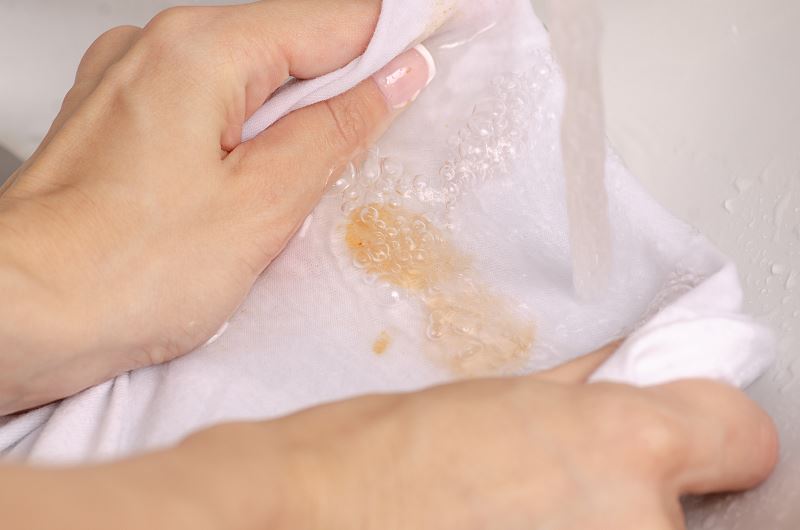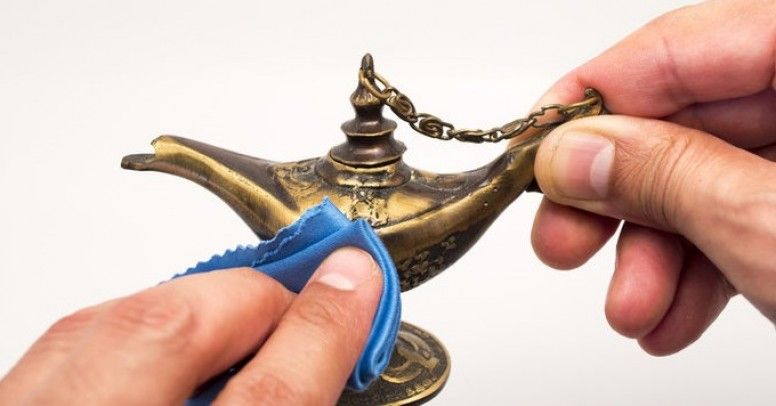Sos z curry.
It is very difficult to remove such stains, so better take the fabric to the laundry.
Washable materials are thoroughly rinsed and the stain is rubbed with glycerin solution, rinse and wash again. Moisten white cotton and linen fabrics with hydrogen peroxide before washing. Rub the carpets with a cloth moistened with borax solution, and in case of failure, rub clean glycerin into the stain and after 10 minutes wash it with a sponge dipped in a warm one and wipe it dry.
Fats,lubricants,oils, meat sauce.
Remove the grease from washable fabrics, and then we wash them. For delicate materials, eucalyptus oil.
Carefully wipe the carpets, and then remove the stain with a household dry cleaning agent or remove the grease with tissue and iron as in the case of wax.
We cover the leather upholstery with a thin layer of bicycle tire glue, a po 24 time. we remove the layer of glue first let's try this method on a small area. Sprinkle talcum powder on textile covers and non-washable fabrics, leave it until the fat is absorbed and shake off the powder. Remove the residues with a grease solvent or a household dry cleaning agent.
Grass.
Remove the traces of washing the fabric with alcohol.
Wine.
We rinse the fabric with soda and dry it with a cloth. Rub with a sponge dipped in shampoo or clean water. We pull out the water well. Wipe the remaining traces with a glycerin solution, rub with a sponge and dry with a cloth.
Candle wax.
We scratch off the wax, we cover the stain with tissue paper and apply a warm iron. The melted wax will absorb the blotting paper. So as not to crush the wax, change tissue paper frequently. Clean the rest with a fat solvent. We wash the stained fabrics or moisten the stain with spirit.
Vomit.
We collect them, spray the material with soda and wipe it with a sponge dipped in a warm borax solution. Then we proceed as in the case of urine stains.
Burn marks
From fabrics, which are washable, we can remove light burn marks, by soaking the fabric in a warm borax solution and washing it in the washing machine. We can bleach white fabrics with hydrogen peroxide.
On non-washable fabrics, wipe the scorching marks with a cloth moistened with borax solution or smear the stain with glycerin, and then wash it off with a sponge dipped in warm water.
Lightly wipe the burns on the carpet with a wire brush in circular movements and in this way remove the damaged fibers.
If only the top of the fibers are burnt, we trim them with scissors or tweezers . We take out loose fibers from the edge of the carpet and glue the ends to the burned place with latex glue. Tweezers will be useful to place the tufts in the right place and to press them into the bottom of the rug.
Large burned areas need to be cut and patched.
We cut out all traces of the burn and give the hole a regular shape, the patch should be slightly larger than the burnout hole. We grease the edges with glue and glue on top, checking, whether the weft and warp threads overlap.
If the fabric is very thick, we glue the patch from below, as described above, we carefully cut out the burned out place and straighten the fibers on the periphery.
We glue the top patch, checking, whether the weft and warp threads overlap, and squeeze into the burned-out hole, arranging the fibers like this, to mask the point of contact.
Burn marks on furniture. If only the polished surface layer is burnt, rub it lightly with a mixture of turpentine and linseed oil or with a tampon moistened with lighter gas.
If the material has more burns, we grind a large surface, to create a shallow recess.
We gouge them in the deepest places and fill them with carpenter's putty, colored wax or molten shellac. We grind the filling, to match the color of the furniture.
If the wood is covered with veneer, let's remember, it's quite thin. Then we should cut out the damaged piece and stick a new veneer in its place.





